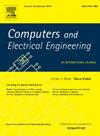Optimizing integrated energy systems at park level: A cooperative game approach with exergy economics
IF 4.9
3区 计算机科学
Q1 COMPUTER SCIENCE, HARDWARE & ARCHITECTURE
引用次数: 0
Abstract
This study presents a comprehensive framework for optimizing energy systems by integrating exergy analysis, energy economics, and game theory. The concept of exergy, which quantifies the usable energy within a system, is employed to evaluate energy efficiency and losses across various energy sources, including thermal, cooling, chemical, and electrical systems. Stoichiometric coefficients, denoted by the factor λ, are utilized to simplify exergy calculations for different energy types and processes. The economic evaluation of energy flows is conducted through energy economics principles, incorporating cost allocation and balance equations. The integration of game theory into the optimization model ensures strategic interactions among energy components, leading to a Nash equilibrium that balances economic performance, efficiency, and environmental sustainability. The model also accounts for emissions and the required proportion of renewable energy. To solve the complex optimization problem, a modified Particle Swarm Optimization (PSO) algorithm is employed, featuring adaptive mechanisms for velocity and inertia updates, enhancing the search process for the optimal solution. The proposed framework is designed to optimize the Integrated Energy System (IES) efficiently, ensuring sustainable and economically viable energy management. The analysis of optimization strategies highlights a trade-off between cost and efficiency. Strategy 1, focused on minimizing cost, achieves the lowest cost at 4069.37 CNY, 25.79 % less than Strategy 2, but with a reduced exergy efficiency of 59.82 %, which is 10.14 % lower than Strategy 2′s 68.47 %. Strategy 3 offers a balanced approach, with a cost of 4970.89 CNY, 9.43 % higher than Strategy 1 but 9.43 % lower than Strategy 2. It achieves an exergy efficiency of 67.87 %, only 0.60 % lower than Strategy 2, thus providing a practical compromise between economic performance and efficiency.
在公园层面优化综合能源系统:采用放能经济学的合作博弈方法
本研究通过整合放能分析、能源经济学和博弈论,提出了优化能源系统的综合框架。外能概念量化了系统内的可用能量,用于评估各种能源(包括热能、冷却、化学和电力系统)的能效和损耗。用系数 λ 表示的化学计量系数可简化不同能源类型和流程的放能计算。通过能源经济学原理,结合成本分配和平衡方程,对能量流进行经济评估。将博弈论融入优化模型,可确保能源成分之间的战略互动,从而实现纳什均衡,平衡经济绩效、效率和环境可持续性。该模型还考虑了排放量和所需的可再生能源比例。为解决复杂的优化问题,采用了一种改进的粒子群优化(PSO)算法,其特点是速度和惯性更新的自适应机制,增强了最佳解决方案的搜索过程。所提出的框架旨在有效优化综合能源系统(IES),确保可持续和经济可行的能源管理。对优化策略的分析凸显了成本与效率之间的权衡。策略 1 侧重于成本最小化,实现了最低成本 4069.37 元人民币,比策略 2 低 25.79%,但放能效率降低到 59.82%,比策略 2 的 68.47% 低 10.14%。策略 3 提供了一种平衡的方法,其成本为 4970.89 元人民币,比策略 1 高 9.43%,但比策略 2 低 9.43%;其放能效率为 67.87%,仅比策略 2 低 0.60%,从而在经济性能和效率之间实现了切实可行的折中。
本文章由计算机程序翻译,如有差异,请以英文原文为准。
求助全文
约1分钟内获得全文
求助全文
来源期刊

Computers & Electrical Engineering
工程技术-工程:电子与电气
CiteScore
9.20
自引率
7.00%
发文量
661
审稿时长
47 days
期刊介绍:
The impact of computers has nowhere been more revolutionary than in electrical engineering. The design, analysis, and operation of electrical and electronic systems are now dominated by computers, a transformation that has been motivated by the natural ease of interface between computers and electrical systems, and the promise of spectacular improvements in speed and efficiency.
Published since 1973, Computers & Electrical Engineering provides rapid publication of topical research into the integration of computer technology and computational techniques with electrical and electronic systems. The journal publishes papers featuring novel implementations of computers and computational techniques in areas like signal and image processing, high-performance computing, parallel processing, and communications. Special attention will be paid to papers describing innovative architectures, algorithms, and software tools.
 求助内容:
求助内容: 应助结果提醒方式:
应助结果提醒方式:


